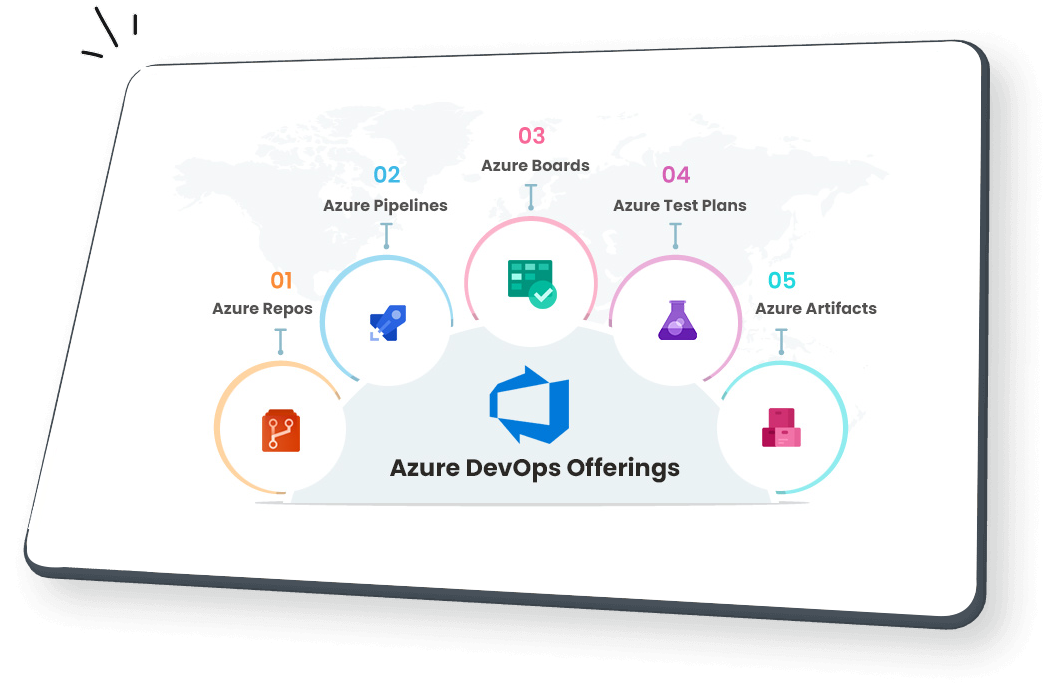Azure Boards
Boards in Azure DevOps offer a suite of Agile tools designed to track work effectively. With capabilities such as Kanban boards, they facilitate progress tracking, bug identification, and issue resolution. By promoting collaboration and transparency across teams, Boards enable real-time updates and visibility into task and project statuses. Integration options with platforms like Slack and MS Teams further enhance communication and collaboration.
In essence, Boards provide a visual representation of work, enabling teams to prioritize tasks efficiently and maintain focus on delivering value. Seamlessly integrated with other Azure DevOps tools, they offer a comprehensive end-to-end experience, from tracking and planning to actual code deployment.
Azure Repos
Azure DevOps Repos provides Git repositories, offering robust version control for code storage. Additionally, it supports Team Foundation Version Control (TFVC), allowing teams to select the version control system that best suits their requirements.
With Azure DevOps Repos, advanced features like branch policies, pull requests, and comments on open pull requests promote collaboration among teams. These features facilitate increased code reviews, build validations, and status checks, enabling teams to work more efficiently without compromising development time.
Implementing branch policies and adopting a pull-request approach to merging code changes enhances repository security by preventing direct pushes to the main branch. This practice minimizes the risk of human error, ensuring the integrity and stability of the codebase.
Azure Pipelines
Azure DevOps Pipelines empower teams to establish Continuous Integration and Continuous Delivery (CI/CD) pipelines, automating the process of building, testing, and deploying applications. These pipelines are configured using YAML, but teams also have the option to create them visually, catering to different workflow preferences.
By utilizing Azure DevOps Pipelines, code changes are seamlessly integrated and delivered to various environments automatically. This enhances the speed and reliability of the software delivery process, ensuring efficient and consistent deployment.
Furthermore, Pipelines offer the ability to create reusable pipeline templates, streamlining the development process and reducing redundancy. This approach promotes code reusability, adheres to the DRY (Don’t Repeat Yourself) principle, and facilitates smoother workload management across projects.
Azure Test Plans
Test plans in Azure DevOps enable continuous testing and exploratory testing of applications, ensuring quality through a suite of comprehensive tools. These tools aid teams in planning, tracking, and managing their testing efforts to deliver high-quality software.
Teams can create and manage test plans, author and execute manual test cases, and monitor progress and results in real time. This capability proves invaluable in the software development lifecycle (SDLC), as it ensures that code cannot be merged without passing all defined checkboxes in the test cases.
With support for both manual and automated testing, Azure DevOps Test Plans accommodate various testing methodologies and practices, making it a versatile solution for teams with diverse testing needs.
Azure Artifacts
Artifacts in Azure DevOps serves as a package repository, enabling teams to share packages such as Maven, npm, and NuGet, and seamlessly integrate them into their build pipelines.
With Artifacts, teams can efficiently manage dependencies within their codebase, ensuring that all team members and CI/CD pipelines have access to the same set of packages. This promotes consistency across various environments and stages of development, streamlining the development process and reducing potential conflicts or discrepancies in package versions.









